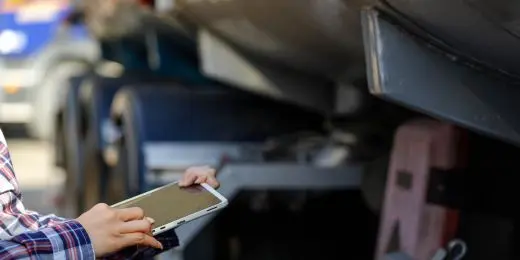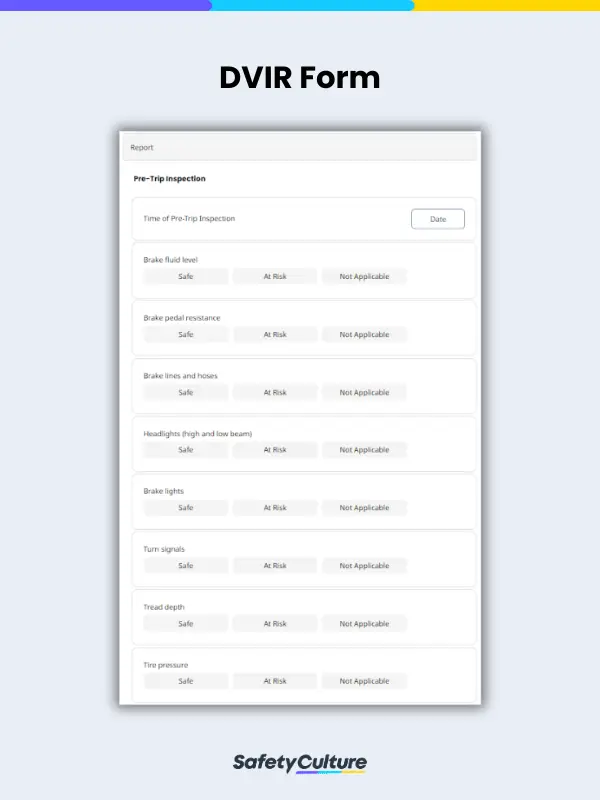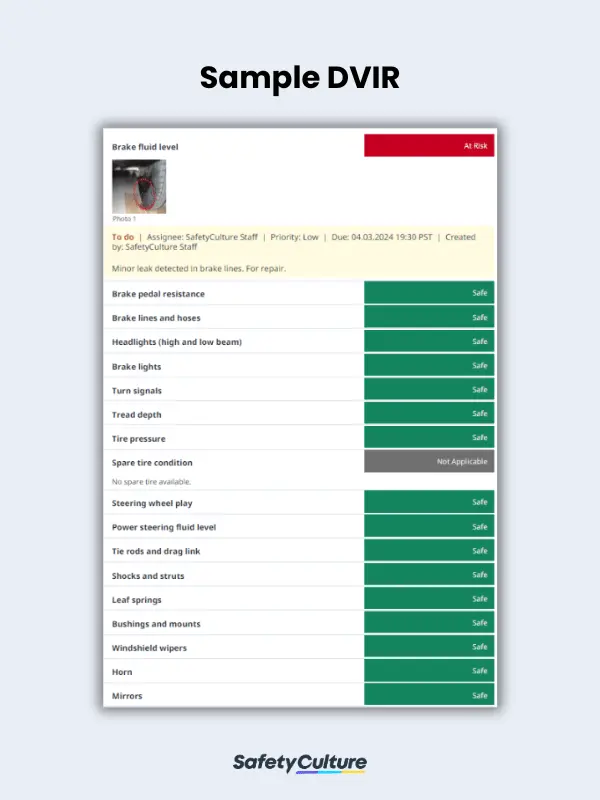What is a DVIR Form?
A Driver Vehicle Inspection Report (DVIR) form is a document designed for commercial drivers to systematically assess the condition of their vehicles before and after each trip. It serves as a critical tool for fleet management and regulatory agencies to monitor the condition of commercial vehicles, contributing to overall road safety. Often, drivers use the form to document any defects or issues they observe, providing an efficient way to report and address maintenance needs promptly.
What is the Purpose of a DVIR Form?
The primary purpose of a DVIR form is to ensure the safety and roadworthiness of commercial vehicles. Commercial drivers must conduct pre-trip and post-trip inspections using the form to assess various vehicle components systematically. By documenting the condition of the vehicle, the DVIR form serves as a proactive tool to identify and address any defects or issues promptly before they escalate.
The use of DVIR forms also facilitates compliance with regulatory standards. Many transportation authorities and regulatory bodies, including the US Federal Motor Carrier Safety Administration (FMCSA), mandate the use of these forms to ensure that commercial vehicles meet safety requirements. Regular and thorough DVIR processes also help prevent accidents and breakdowns on the road, thereby promoting overall public safety.
DVIR forms also ensure that sensors and other Internet of Things (IoT) devices are working as intended. This ensures sensors are checked regularly for proper functioning as part of the pre-trip and post-trip inspections. If a sensor is found to be malfunctioning or damaged during the DVIR inspection, the driver can document it on the form, creating a record of the issue that needs to be addressed.
In addition to safety and compliance, the DVIR form creates a documented history of the vehicle’s condition over time. This historical data becomes crucial during audits, inspections, or investigations, allowing fleet managers and regulatory authorities to assess the maintenance history of a vehicle and ensure that it has been consistently in compliance with safety standards.
What to Include in One
To ensure the effectiveness of the DVIR process, it’s essential to include specific key components in the form to be used for it. Doing this will help you create a systematic checklist for drivers to inspect various critical systems and components, promoting both safety and regulatory compliance.
Generally, the following pages and sections must be available and easy to fill out in your DVIR form:
- Title Page
- Driver Information
- Vehicle Identification
- Date and Time
- Pre-Trip and Post-Trip Inspection
- Essential vehicle components such as brakes, lights, tires, steering, suspension, and other safety-related features
- Defect Reporting
- Repair Action (if applicable)
- Completion Page
- Driver’s Signature
- Mechanic’s Signature (if applicable)
- Comments or Additional Notes
How to Use a Form for Creating DVIRs
Utilizing a form for completing DVIRs ensures that safety checks are consistently conducted and any defects or issues are promptly documented for necessary action. To guide you better, here’s a quick step-by-step process for using a DVIR form:
- Start by filling in the driver’s information on the form, including their name, date, and any relevant identification details to establish a clear record of who performed the inspection.
- Specify the make, model, year, and license plate number of the vehicle being inspected.
- Record the date and time of both the pre-trip and post-trip inspections accurately, ensuring they’re conducted at the required intervals.
- Go through the checklist and mark off each safety-related component for a thorough examination.
- After completing the trip, repeat the inspection process using a similar checklist for post-trip to identify any new issues that may have arisen during the journey.
- Document any defects, issues, or abnormalities discovered during both inspections.
- Document immediate actions taken to address identified defects, if any. Mark items for repair, maintenance, or further inspection.
- Sign the DVIR form to confirm that the inspection has been completed and the reported information is accurate.
- If repairs or maintenance need to be conducted, leave a space for the mechanic or authorized personnel to sign, confirming the completion of the necessary actions.
- Use any additional space on the form for comments or notes that may provide context or additional information about the inspection or repairs.
DVIR Form Example
Here’s a sample DVIR form when filled out and exported as a PDF report:
FAQs About DVIR Forms
Commercial drivers are required to complete and sign a DVIR both before and after each trip. Doing so confirms that pre-trip and post-trip inspections have been diligently carried out, defects or issues have been accurately reported, and any necessary actions, such as repairs or maintenance, will be promptly addressed.
The fleet maintenance department or an authorized repair facility is usually the one responsible for addressing the identified defects in the DVIR form. Once a driver completes the DVIR and reports any defects or issues, it initiates a process where the maintenance team reviews the reported problems and determines the appropriate course of action.
In cases where no defects are identified, the driver is still obligated to complete the DVIR form, signifying that a diligent examination took place and the vehicle is in satisfactory condition.
This practice helps regulatory authorities and fleet management teams ensure that vehicles are consistently and systematically checked, promoting a proactive approach to maintenance and overall safety compliance.




